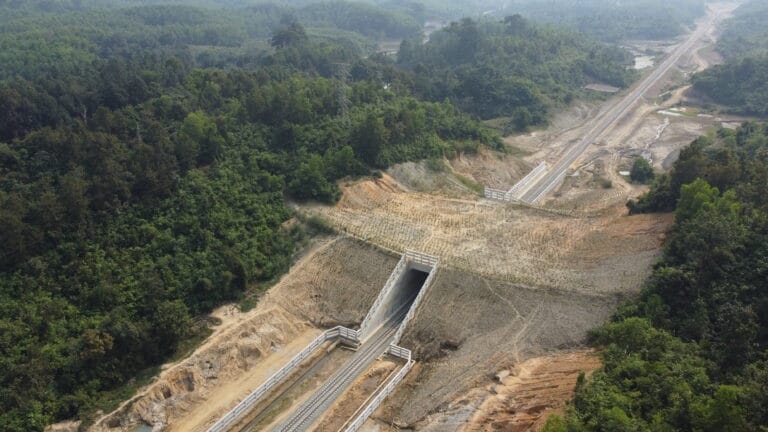
At the beginning of the 20th century, more than 100,000 Asian elephants were living in the wild. Now, it is estimated that just 52,000 remain. Among the reasons for their decline — in addition to poaching and human-elephant conflict — is the boom of newly built roads and railways, which lead to collisions, habitat loss and fragmentation and the blocking of migration routes.
To help with this crisis, an international team of experts has created the first handbook on how to protect endangered Asian elephants from this widespread hazard.
“Elephants need to move to survive — to find food, water, and mates. In some cases, new roads and railways are being built right across ancient Asian elephant migration routes,” said Rob Ament, handbook co-author, Asian Elephant Transport Working Group (AsETWG) co-chair and senior conservationist with the Center for Large Landscape Conservation (CLLC), in a press release from AsETWG.
Published by AsETWG, the “Handbook to Mitigate the Impacts of Roads and Railways on Asian Elephants,” was a collaboration between the Connectivity Conservation Specialist Group and the International Union for Conservation of Nature (IUCN) Asian Elephant Specialist Group, World Wildlife Fund said.

According to the press release, authors of the handbook included nine elephant and transport ecology experts from AsETWG, along with two staff members from CLLC.
The goal is to put the resource into the hands of government officials, transportation planners, engineers, policymakers, financiers and others who would find it useful in the 13 nations where wild Asian elephants still roam.
Ament said that, due to the rapid rate at which linear infrastructure is being developed in Asia, Asian elephants will become increasingly impacted by roads and railways. This makes it all the more essential to avoid and mitigate these impacts in order to protect the endangered species.

“This publication combines decades of experience from the contributors and is a prime example of collaboration across sectors and political boundaries to tackle a serious conservation issue,” said co-author of the handbook Melissa Butynski, AsETWG coordinator and an international connectivity project specialist with CLLC, in the press release.
The IUCN Red List of Threatened Species lists Asian elephants as “endangered,” with increasingly isolated populations in Indonesia, Cambodia, Bhutan, China, Bangladesh, Laos, Myanmar, Malaysia, Sri Lanka, Thailand, Vietnam and Nepal.
“People living and working in countries with Asian elephants see the very real threats from linear infrastructure this incredible species faces. There is a sense of urgency to act before it’s too late,” Butynski said.
The authors of the handbook plan to introduce its recommendations in the countries where Asian elephants still live. They will help facilitate solutions through in-person workshops and webinars for conservationists, researchers, government officials and others with the desire to protect these majestic and gentle creatures.
“I hope these guidelines find wide usage across the elephant range and that it is adapted and translated into local languages, so that its use across all 13 countries that still have the Asian elephant is encouraged,” wrote Vivek Menon, author of the foreword to the handbook, Wildlife Trust of India co-founder and chair of the IUCN Species Survival Commission Asian Elephant Specialist Group, in the press release.
The post First-of-Its-Kind Handbook Helps Protect Endangered Asian Elephants From Roads and Railways appeared first on EcoWatch.
